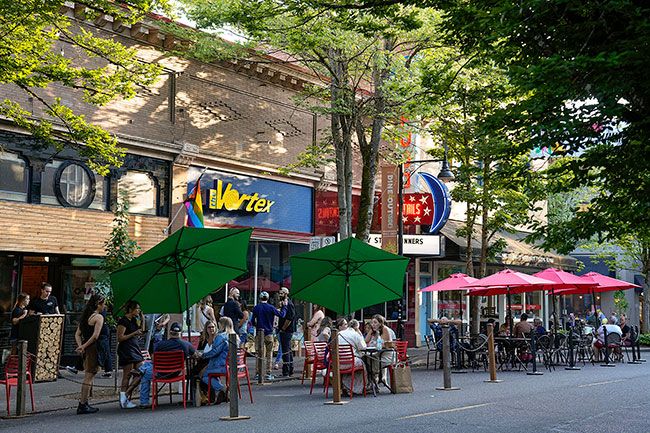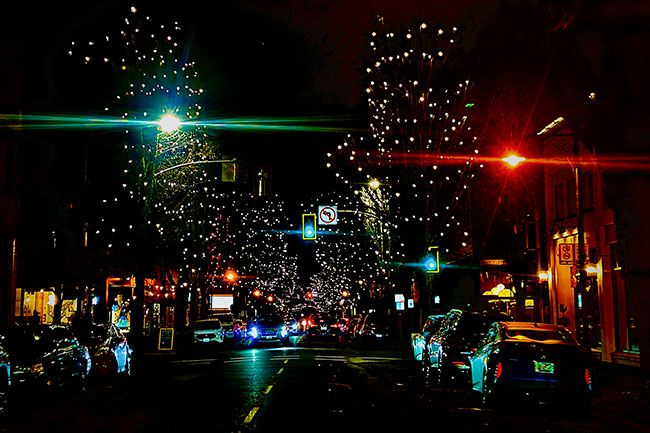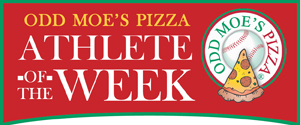Kirby Neumann-Rea: Is Mac truly trapped in time, or is it just the travel writer?


“McMinnville looks like something out of a Christmas card and its history dates back to the mid-1800s. McMinnville’s picture-perfect Third Street is lined with buildings built between the late 1800s and early 1900s.”
This intro to an online Reader’s Digest article I happened across last month is essentially true.
It’s also true that: “McMinnville is famous for farm-to-table restaurants and friendly residents.” But the rest of the item is problematic.
In mid-July, I read something else about Yamhill County, this time a full article, not just a summary with photos, as was the case with Reader’s Digest. According to Travel Leisure, “This must be the most underrated wine region on the West Coast — and it’s not in California.”
The reference was to Oregon’s Willamette Valley. And the article was accurate, or at least mostly so.
However, it was strangely deceptive in focusing about 90% on McMinnville and surrounding towns, with only brief mentions of Salem, Woodburn, Beaverton and Silver Falls State Park.
In the past 35 years, I’ve lived in three towns that are, shall we say, highly attractive to visitors: Port Townsend in Washington and Hood River and McMinnville in Oregon. As a journalist working in all of those places, I was aware of many outside descriptions of the places — and the errors or misrepresentations:
Port Townsend a crumbling Victorian-era seaport (crumbling maybe 40 years ago); Hood River nestled among 4,000-foot basalt cliffs (more like 800 feet, tops); and McMinnville, one of “20 small towns that appear frozen in time” (highly exaggerated).
This is the rest of what Reader’s Digest says:
“Nearly everything there used to be something else: the funky Hotel Oregon was once a bus depot, R. Stuart Winery operates its wine bar out of a converted granary, and the Bitter Monk Brewery pulls taps in the building that once housed the town’s first bank. ... It is also the home of the world-famous Evergreen Aviation & Space Museum, which houses The Spruce Goose, the famous wooden airplane built by Howard Hughes.”
The list includes iconic places such as Cooperstown, Nantucket, Taos and Solvang. In the Northwest, Leavenworth and Mount Angel were also cited.
There are quibbles and corrections to be made, but first: The article includes scenic images that seem chosen for their classic evocations of place — the famed elk antler arbor in Jackson, Wyoming; cowboys hanging out in downtown Tombstone; and the graceful harbor of Mackinac Island, Michigan.
McMinnville’s image, which includes venerable Third Street Books, is not bad. But what you mostly see are modern vehicles and a sandwich board sign for businesses that closed three years ago.
The outright errors in the Reader’s Digest piece include: R. Stuart & Co. Wines does produce wine in a former granary, but its tasting room is a cozy storefront downtown. The Bitter Monk is not a brewery, but a taproom — and getting cozier all the time.
Years back, Hotel Oregon did serve as the bus depot, or at the least ticketing location, when Greyhound stopped at Third and Evans. But the article suggests it was built as a bus depot, which it was not.
A further quibble is the part about “nearly everything there used to be something else.”
There is an advertising concept where you make your product sound unique by implying it is the only one with a characteristic or ingredient that, in fact, all of its competitors share. For example, “Minty Fresh!” describes just about every toothpaste on the market.
So “nearly everything there used to be something else” describes, at least to some extent, every town that’s been around for 175 years. It’s a circular, stating-the-obvious travelogue equivalent to “tastes like chicken.”
It’s the nature of urban places that uses change over the years, but in McMinnville, there actually aren’t many century-plus businesses that “used to be something else.” Buchanan Cellers? Linfield University? Hotel Oregon?
Then there is the irony of emphasizing an air and space museum as an attraction in a town “frozen in time.”
McMinnville is a place that, to me, looks backward in healthy ways, while also looking ahead.
It ought to be on a list of places that “keep up with the times.” You could say that “frozen in time” is correctly applied only to ghost towns.
Articles such as the one in Reader’s Digest (which has been notified of the errors) appear written by People Who Have Not Actually Visited The Town, or so I have inferred from past articles ranging from fly-by-night online “listicles” to ones appearing in major dailies.
The subhead on travel writer Tamara Gane’s article is, “These picture-perfect small towns are living reminders of a bygone era.”
It does not say which bygone era. Such reverse-field stereotypical summaries of places with rich history and character — current or otherwise — do no one any favors.
Breweries operating out of old banks can be found in plenty of places. New Jersey and Minnesota are two I found in a five-minute online search.
And “brewery in the original bank in town” will undoubtedly crop up later in some description of McMinnville, because a less-than-intrepid writer just skimmed factoids from other articles they had read about the place. I call it “the sourdough effect,” as the original misinformation microbe stays in the mix, right.
Meanwhile, while Zoe Baillargeon largely captures the scenic, cultural and culinary splendor of Yamhill County wine towns, her Travel Leisure piece makes no mention of restaurants or other attractions in Eugene, Corvallis, Albany, Stayton or Tualatin. Not a word.
When she states, “The wine world is sometimes thought of as stuffy, but not the Willamette,” she’s really, then, just talking about us.
Kari Shaughnessy of Hayward restaurant, newly relocated to Carlton, has an interesting quote about this area: “Anyone has the opportunity to feel like a local here.”
With all this great outside press, that leads us to ask, so how do the locals feel? After all, it’s ultimately locals who serve as the best audience for what makes McMinnville unique and interesting.
Is local promotion up to par for community events and gatherings? Is it acceptable to allow our crosswalks to wear down into dots and dashes, like some sort of pedestrian Morse Code? Is our wayfinding signage up to speed for our visiting friends and customers?
On the other hand, can we dispense with simplistic notions about there not being anywhere to park downtown (there is, and it’s free), or there not being anything on Third but wine bars (we have plenty, but also places offering gifts, stationery, baked goods, prescriptions, a tuneup, kitchenware, jewelry, olive oil, shoes, books, clothing, thrift items and more).
Ideas and impressions are everyone’s sourdough. Once they settle in, they spread and ferment.
At the News-Register, our own sourdough has been known to pop up, but plenty of effort goes into making sure that details about our communities are accurate and updated. This publication is certainly the best source for that perspective, along with the annual Visitors Guide now available at businesses throughout Yamhill County.
I’m personally sending Tamara Gane a copy of the guide so that next time, should she visit or not, she’ll have the latest facts.







Comments